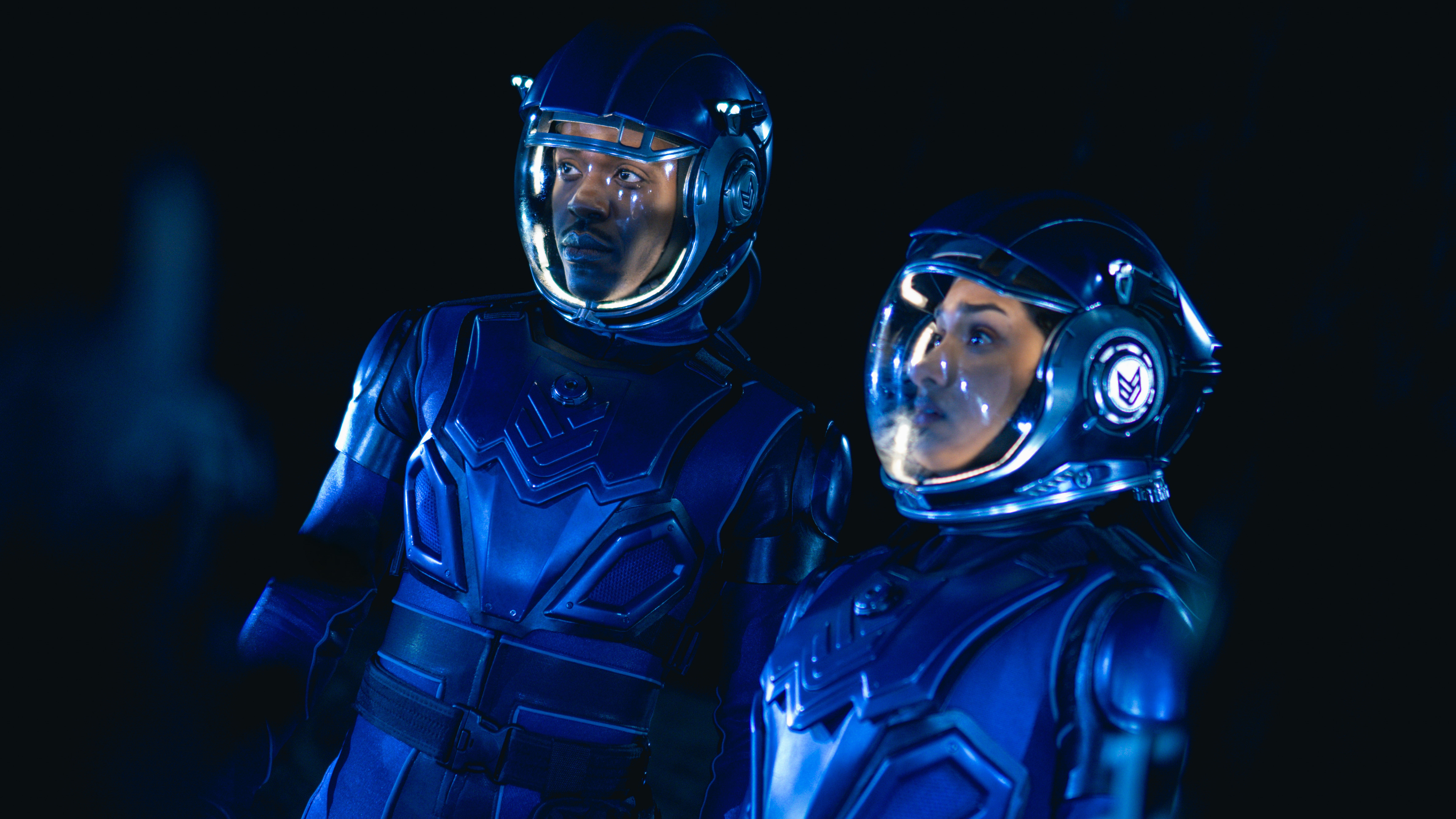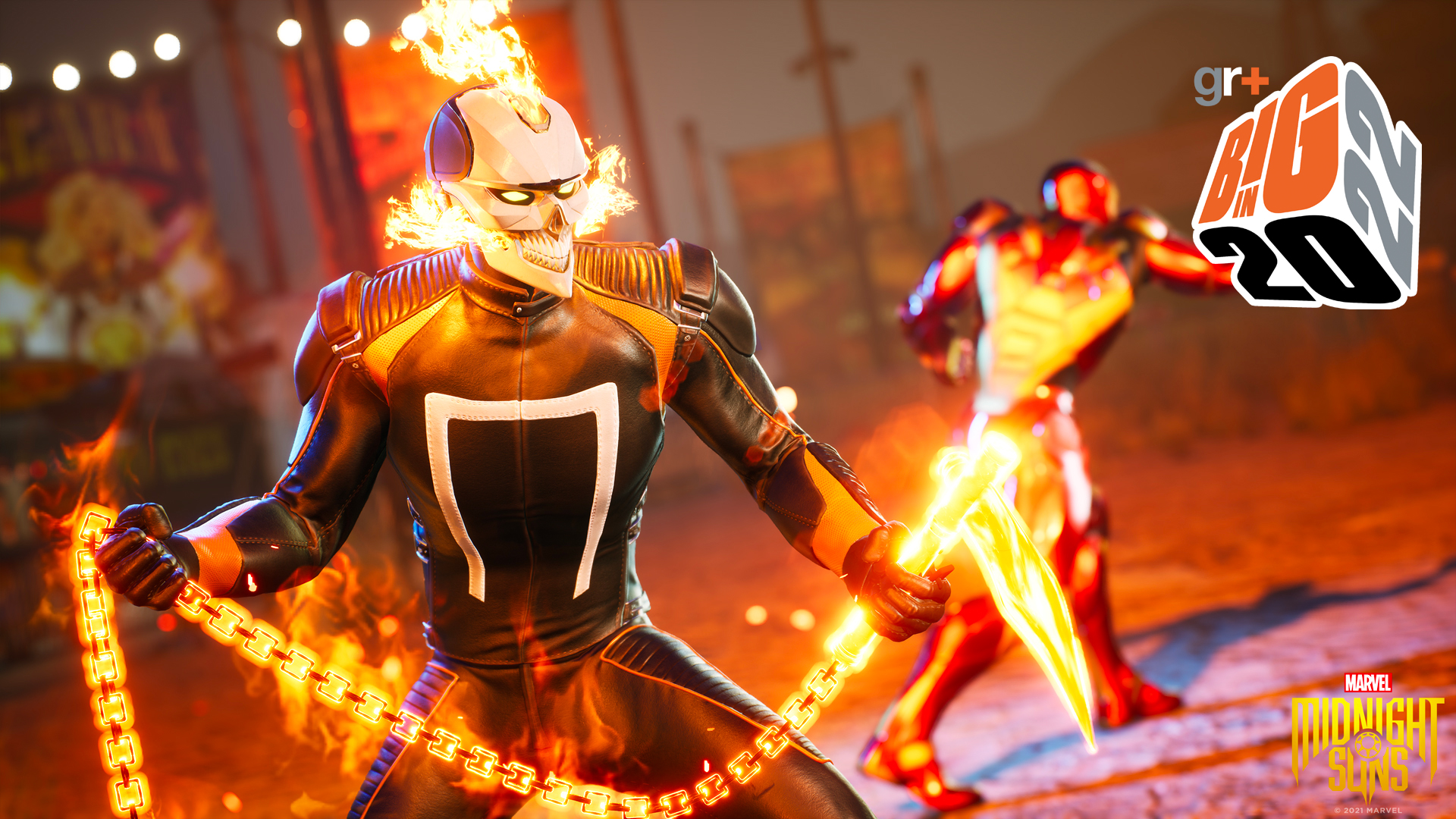
We must learn to let go of our expectations. Marvel's Midnight Suns became the latest victim of a culture of leaking that has become prevalent across social media in the modern era. If you're anything like me, when you first head the rumors during summer 2021 that Firaxis was joining forces with Marvel to create a new tactical-RPG, it conjured a very specific image.
XCOM, only the Extraterrestrial Combat Unit has been discharged and replaced by a lineup of the Earth's Mightiest Heroes. Slowly, as recognisable faces are defeated, they'd be replaced by player-created Enhanced, Inhumans, and Mutants. The gritty aesthetic that once helped to define Enemy Unknown, swapped out for the sharp, stylized line work that artist Andy Kubert once used to breathe new life into the X-Men portfolio in the '90s. This hypothetical Marvel-meets-XCOM sounds interesting, but it isn't anything like Firaxis' Midnight Suns.
While Firaxis is indeed returning to the space in which it specializes, Marvel's Midnight Suns has as much in common with games like Into the Breach and Slay the Spire as it does XCOM. And after speaking with creative director Jake Solomon to discuss this strange concoction of turn-based tactics, fast-paced action, and deliberate deck-building, I'm convinced Marvel's Midnight Suns deserves to be seen for what it actually is – rather than what so many of us hoped it could be.
Play the hand you're dealt
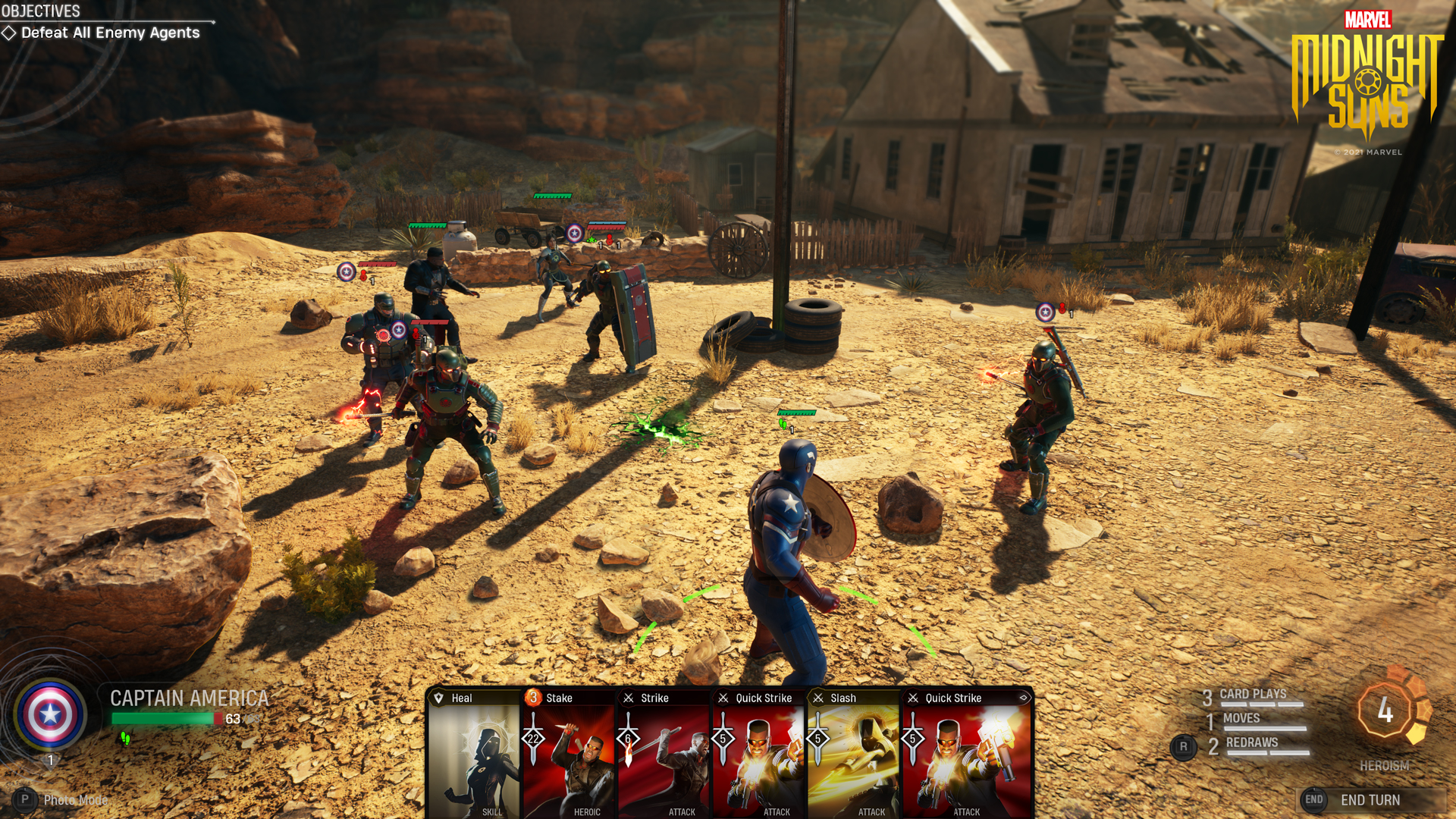
Marvel's Midnight Suns doesn't launch you into a war of attrition. You won't be cowering behind cover, counting out squares on a grid, or desperately hoping that a dice-roll doesn't screw you out of landing your shots. You're playing as established superheroes, and you need to act accordingly. It's a principle difference to the premise XCOM's action was rooted in – "you aren't learning how to fight or gradually growing stronger," says Soloman. Instead, you'll bring up to three heroes into combat, fighting against legendary Marvel villains and the type of foot soldiers that never seem to survive past a single panel in the comics.
Some of the enemies you'll come up against don't even have health bars, such is the strength of heroes like Blade, Captain America, Ghost Rider, and Magik. Organizations like Hydra offset their lack of survivability by flooding the zone, and you'll need to utilise hero abilities to quickly and efficiently clear arenas before you're overwhelmed by reinforcements. Rather than mapping these abilities to a taskbar or button inputs, Firaxis has represented these as playable cards.
"Each hero has a unique deck and set of abilities – no characters share any cards between each other," says Solomon, noting that there's no general 'punch' or 'block' cards. Every card has been specifically designed to reflect a hero's fighting-style, proficiencies, and personality. "Out of combat, you can select and swap any abilities you want in your eight card deck; you can have duplicates of the same ability or you can have a unique card in every slot."
Learning this piece of information assuaged my initial fear, that the deck building and card management would be like Hearthstone or Magic the Gathering. But the knock-on effect is that it made me worry about the depth of Midnight Suns' combat. Managing an eight-card deck sounds simple enough, but how could it possibly provide enough variance to stay entertaining across long, drawn out battles?
Sign up to the GamesRadar+ Newsletter
Weekly digests, tales from the communities you love, and more
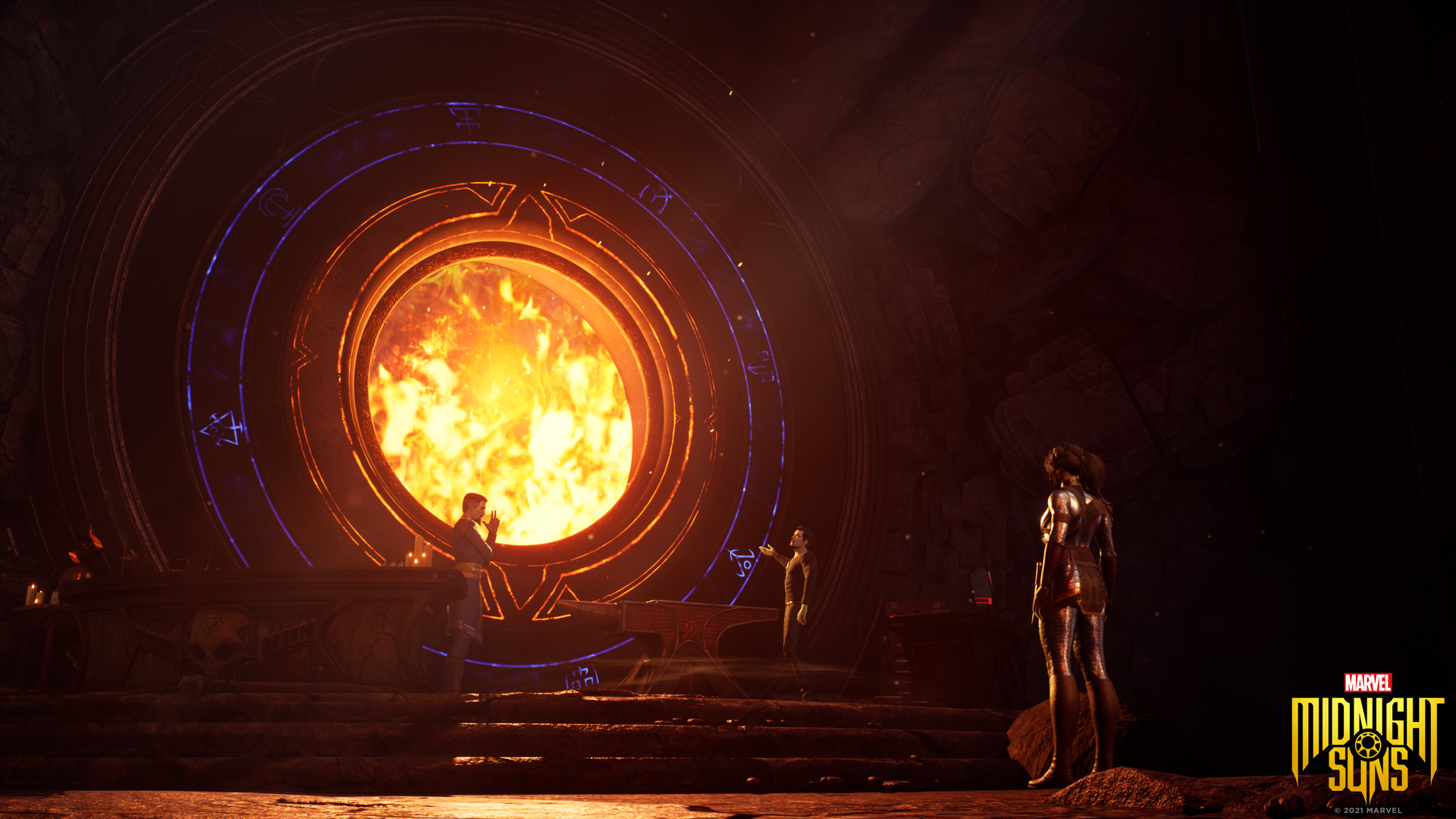
"Because you can customize every hero's deck, you can change their playstyle to be more offensive, defensive, or support oriented"
Jake Solomon, creative director
As it should happen, they aren't supposed to. The combat arenas are but a fraction of the size of the XCOM maps, and many of the missions can be wrapped in around 10 minutes. You accept a task, you assemble a squad, and you get the job done. Depth in Midnight Suns isn't born out of building a deck broad enough to survive RNG, but through the way your hero decks combine. "Because you can customize every hero's deck, you can change their playstyle to be more offensive, defensive, or support oriented," says Solomon, who notes that ability cards can be both upgraded and modded in support of further specialisation.
You'll customise decks back at The Abbey, the Midnight Suns' homebase where you'll be able to interact with, and invest in, the large roster of heroes joining you in the fight against Lilith. "If you want to have more Iron Man abilities, you need to take Iron Man into combat more frequently," says Solomon, explaining that Gamma Coils collected in combat can be analyzed at the squad's Forge by Tony Stark, which will give you "three semi-random abilities, affected by who you choose to take into battle in the last fight" which can later be added to a hero's deck.
Solomon also tells me that you can upgrade ability cards to help refine the skillsets of your favorite heroes. "If you have two of the same base card, you can take them to the Yard and upgrade them for a certain cost. For example, you can take two of the Hunter's Slash abilities and create a Slash+ ability, which deals more damage and converts the Knockback effect to Forceful Knockback," he explains. "You cannot upgrade an already upgraded ability though (you can't create a Slash++ card, for example), but you can unlock the ability to modify cards later on to add even more effects."
Generating heroism
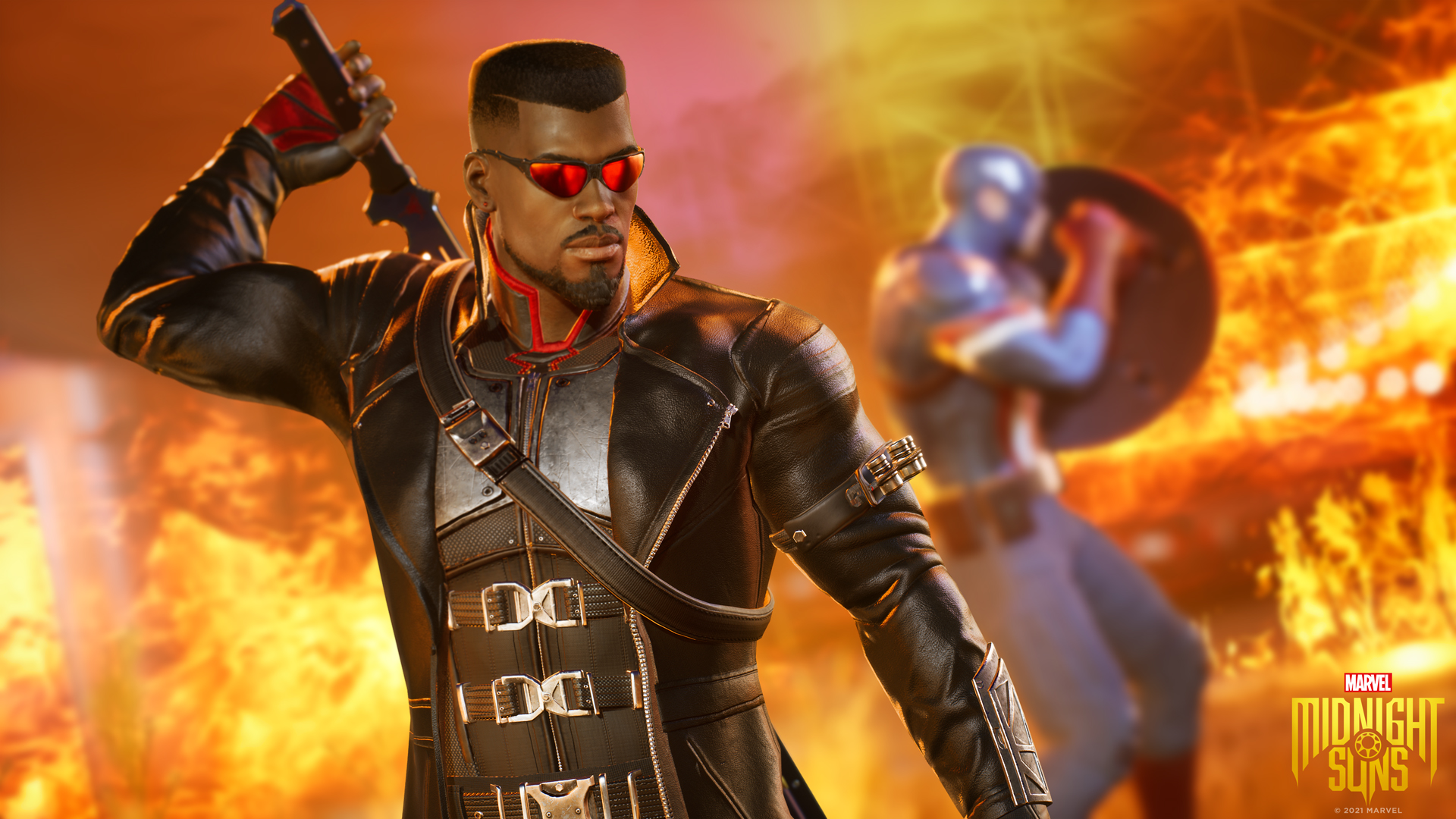
"Ultimately, a good squad consists of three heroes who have complimenting skillsets and have a combined set of abilities that net out to generate some Heroism," says Solomon. Heroism is so integral to Midnight Suns' combat, and such a visible component of the UI, that I'm just going to leave the creative director to explain it. He adds: "Much of combat is centered around a resource called Heroism. Cards come in three categories – Attack, Skill, and Heroics. Attack and Skill cards generate Heroism, while Heroics cost Heroism. Heroics are the most powerful category of abilities in the game, but there's no guarantee on when you draw them or if you have enough Heroism to execute them."
Seeing Midnight Suns in action crystallizes how this interplay should function. Blade thinning the first wave of enemies by playing an Action card to fire off a pair of submachine guns, The Hunter follows with a Skill card which unleashes a chain of sword slashes, sending one Hydra agent careening into another, damaging both of them. Those attacks generate enough Heroism for Doctor Strange to call upon the Axe of Angarruumus – a Heroic that deals a truly devastating damage to a single foe.
Like the hugely influential indie card battler Slay the Spire, Midnight Suns is about synergy as much as it is anything else. "You have to think about each hero's individual decks, and then how those character decks mesh or clash with the rest of your squad," Solomon continues. "If you load up on too many Heroic abilities in every character, you will find yourself unable to use any of them because you can't generate enough Heroism. Vice versa, if all you have are Heroism generating abilities, you may find yourself unable to do enough damage."
What's fun here is that Firaxis is promising a lot of variance in terms of specialisation, which will in turn impact the sort of combinations you execute in combat. "Ghost Rider specializes in dealing a ton of damage, but his attacks often incur damage to himself. Magik lacks a lot of direct damage, but her ability to generate portals, knockback enemies, and manipulate their positioning makes her invaluable. Blade is a straightforward damage dealer, but a lot of his attacks generate bleed and he can lifesteal. Nico Minoru has very strong magic offensive abilities, except they can be unpredictable and require some set up to maximize results."
Subverting expectations
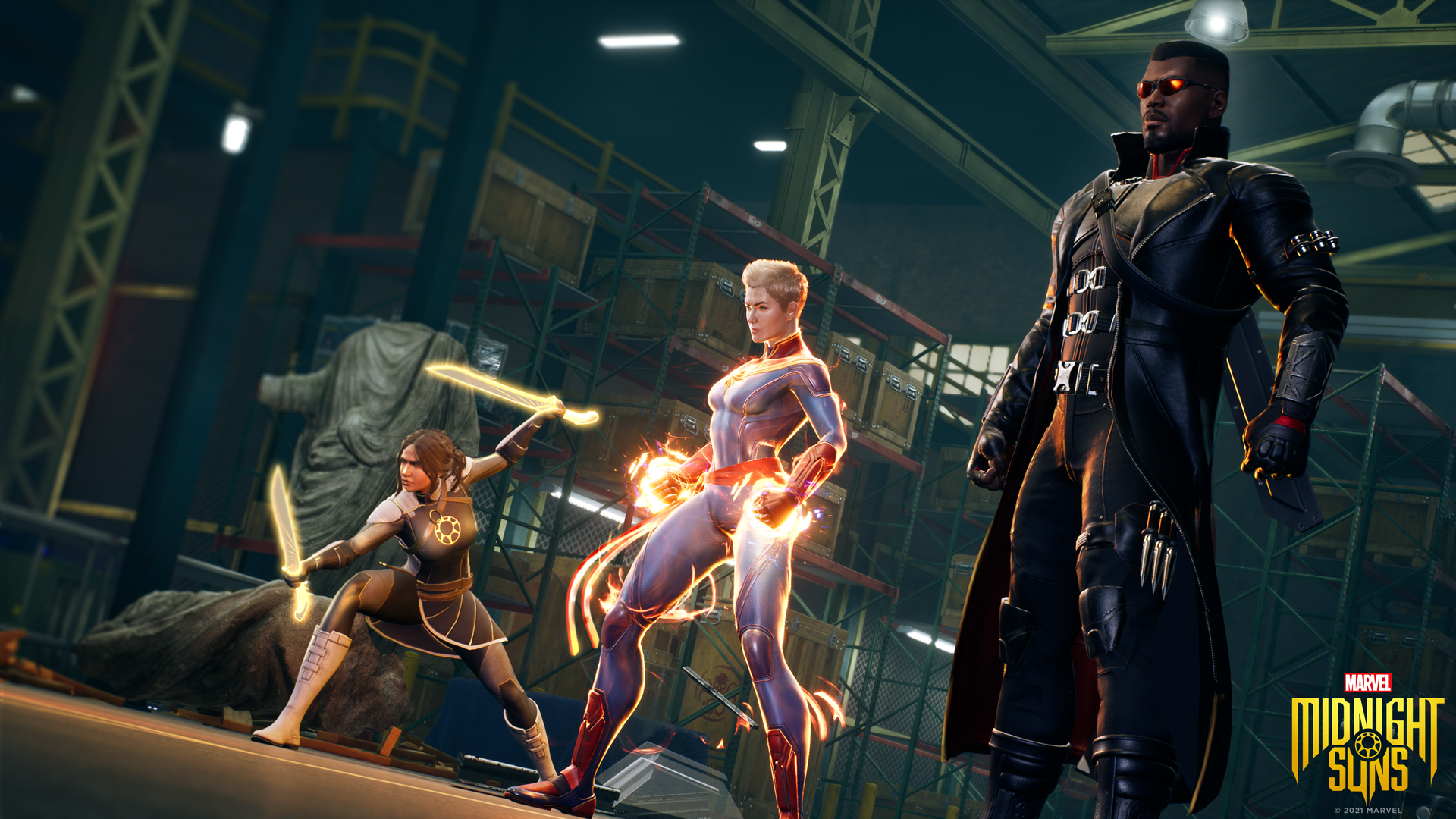
Given the size of the combat arenas, Marvel's Midnight Suns has less reliance on movement and placement than XCOM. Getting your heroes into advantageous positions, however, is still key to success. "Each turn, the player has three card plays, two redraws, and one move. For the move, you can select any hero and move them wherever you want on the battlefield. This is often most useful when you are trying to line up an attack with knockback, or put yourself at an angle so that you can leap off an environmental object to do damage," says Solomon.
With no cover or suppression effects to worry about, the way turns function has also changed between XCOM and Midnight Suns. Enemies clearly indicate who they are planning to attack next, giving you ample opportunity to decimate your enemies with smart card plays. "Every hero has a unique icon, and this icon is displayed above every enemy to indicate who they are planning to attack next. Because of this, the player can find ways to mitigate upcoming damage during the enemy's turn. This can be done by taking down enemies, or by applying debuffs like Weak to reduce their damage. Some heroes like Captain America, Wolverine and Captain Marvel have the ability to Taunt, to force the enemy to switch targets," Solomon says, adding, "and using the environment is an important element as well – you can knock back enemies into electrical junction boxes to apply Stun to them, stopping them from attacking in the next turn."
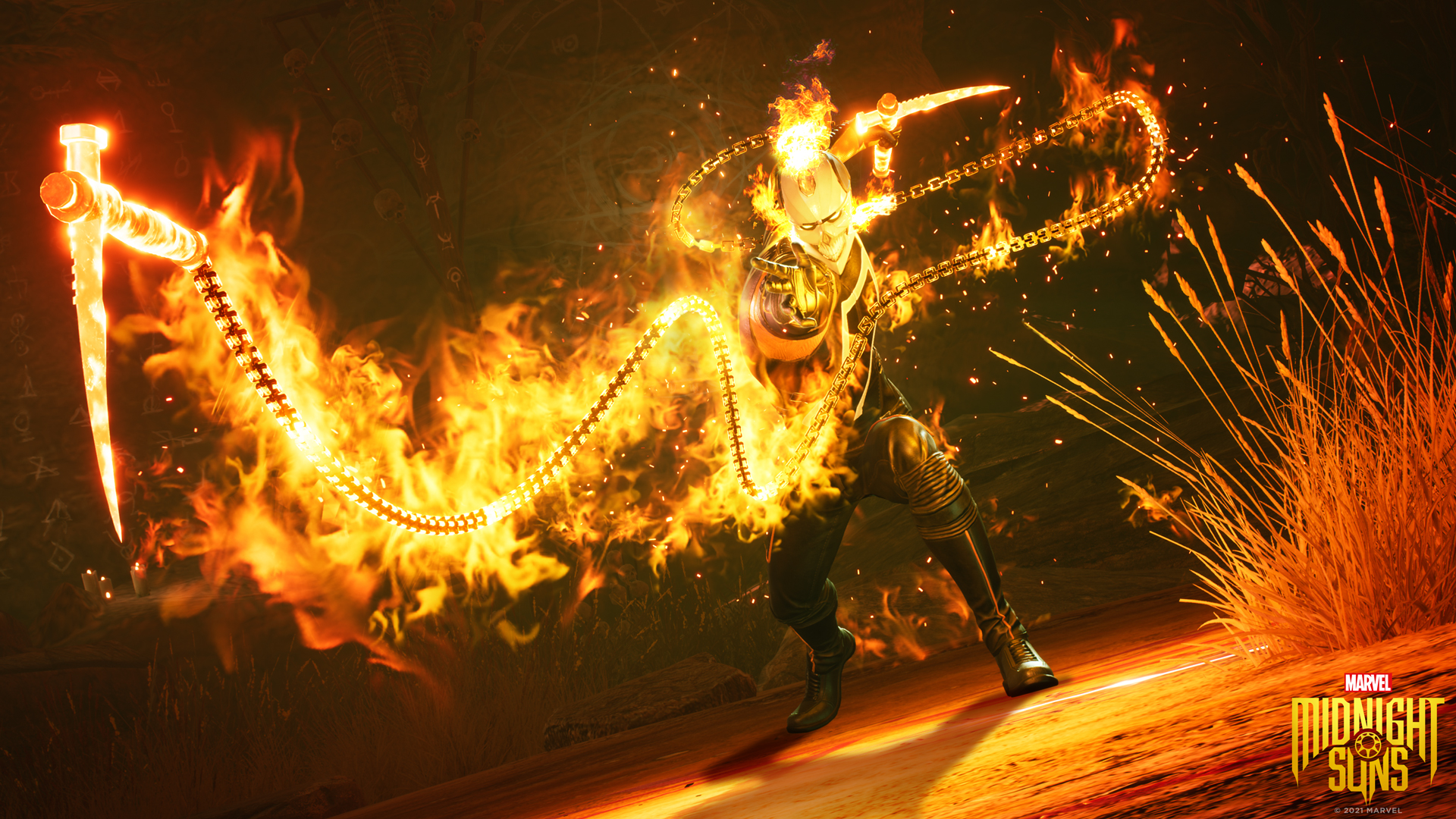
"Heroes who fall below a certain threshold of health will be 'Injured', which lasts for a couple of in-game days"
Jake Solomon, creative director
And then there's the question of a tried and true XCOM staple – permadeath, an element that really helped to set Firaxis' strategy series apart. While Midnight Suns will let you build your own unique leading hero, The Hunter, and customise decks for each of your squadmates, it won't let your bad decisions kill off Marvel's most famous heroes. That said, there is a penalty for tactical disasters. "If any hero is downed, the player will have the opportunity to revive them for the cost of two Heroism," continues Solomon. "If all of your heroes are downed, you lose the mission and must restart. Heroes who fall below a certain threshold of health will be 'Injured', which lasts for a couple of in-game days. These injuries apply temporary negative traits to the heroes – for example, an 'Injured' Doctor Strange may start combat with less total health."
I'm impressed by what I've seen of Marvel's Midnight Suns so far. It's far more than a rebranded XCOM, subverting some common elements in smart ways and leaning on an easy-to-understand deck-building system to deliver a new spin on superhero action. Marvel's Midnight Suns deserves to be seen, and judged, on its own merits. Firaxis is set to launch its tactical-RPG in the second half of 2022 and I'm hoping we won't have to wait long to see more of it in action. Marvel's Midnight Suns isn't the game I thought it was going to be, and it's probably going to be all the better because of that.
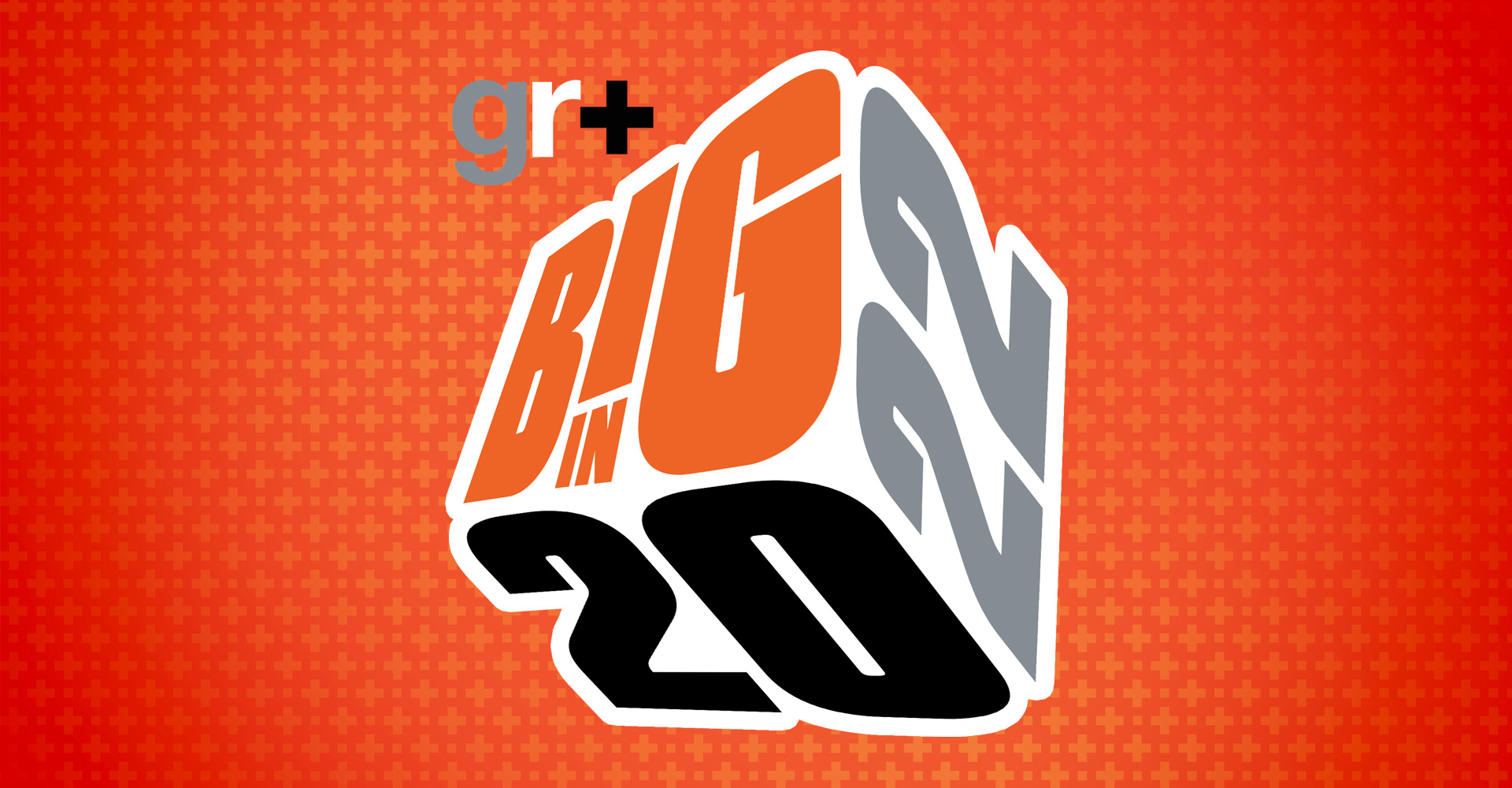
All throughout January, GamesRadar+ is exploring the biggest games of the new year with exclusive interviews, hands-on impressions, and in-depth editorials. For more, be sure to follow along with Big in 2022.

Josh West is the Editor-in-Chief of GamesRadar+. He has over 15 years experience in online and print journalism, and holds a BA (Hons) in Journalism and Feature Writing. Prior to starting his current position, Josh has served as GR+'s Features Editor and Deputy Editor of games™ magazine, and has freelanced for numerous publications including 3D Artist, Edge magazine, iCreate, Metal Hammer, Play, Retro Gamer, and SFX. Additionally, he has appeared on the BBC and ITV to provide expert comment, written for Scholastic books, edited a book for Hachette, and worked as the Assistant Producer of the Future Games Show. In his spare time, Josh likes to play bass guitar and video games. Years ago, he was in a few movies and TV shows that you've definitely seen but will never be able to spot him in.


